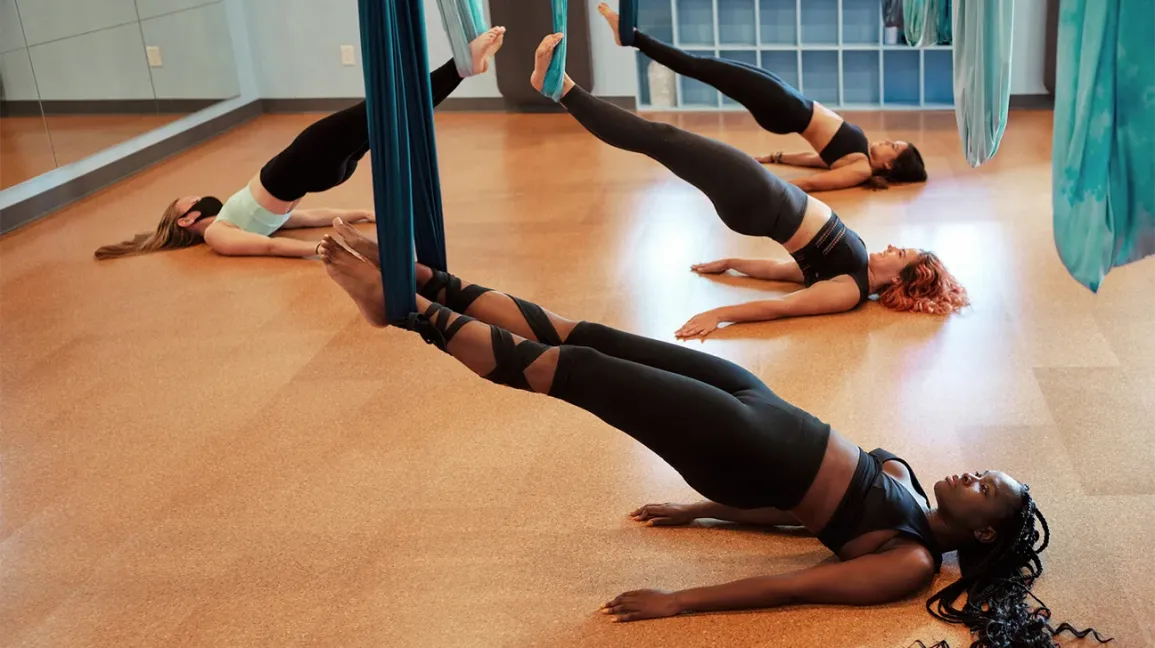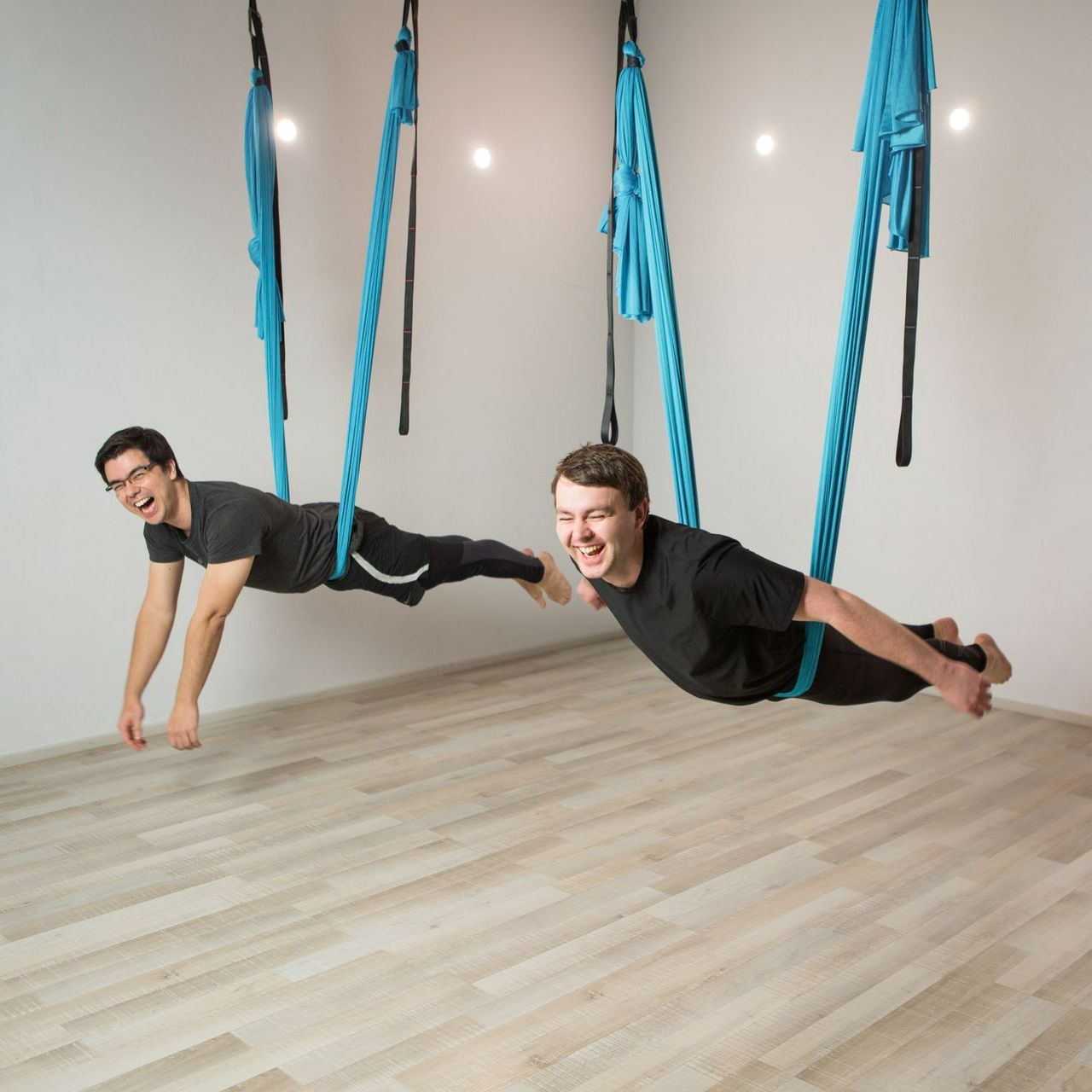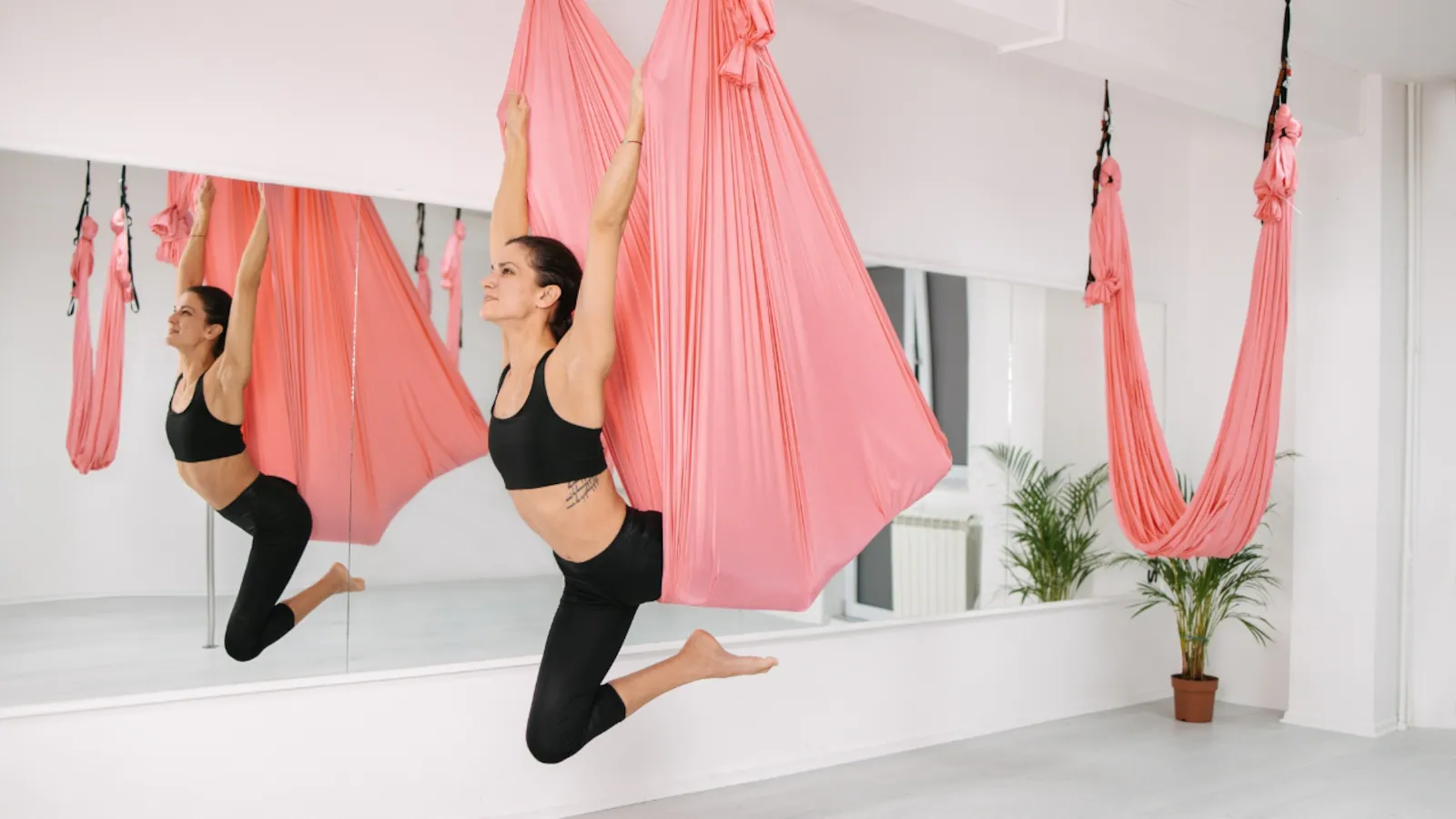I. Introduction
A. Definition and Concept of Aerial Yoga
Aerial yoga, also known as anti-gravity yoga or flying yoga, is a unique form of exercise that combines traditional yoga poses with the use of a hammock or silk fabric suspended from the ceiling. It allows practitioners to experience a weightless and floating sensation, while improving flexibility, strength, and overall physical and mental well-being.
B. Importance of Aerial Yoga for Physical and Mental Well-being
Aerial yoga offers numerous benefits for both physical and mental well-being. It helps to improve flexibility, strength, balance, and core stability. Additionally, it provides stress relief, relaxation, increased mindfulness, and body awareness. Engaging in aerial yoga regularly can help individuals achieve a greater sense of overall health and wellness.
II. The Benefits of Aerial Yoga
A. Physical Benefits
- Improved Flexibility and Strength
Due to the weightless and supportive nature of the hammock, aerial yoga allows practitioners to deepen their stretches and poses, leading to improved flexibility. The fabric also provides resistance, aiding in building strength in muscles throughout the body. Regular practice of aerial yoga can help individuals achieve greater freedom of movement and range of motion.
- Enhancing Balance and Core Stability
The unstable nature of the hammock in aerial yoga challenges the practitioner to engage their core muscles and improve balance. Balancing in the silk fabric requires focus, concentration, and coordination, which enhances core stability and helps to develop a stronger core. The increased stability and balance gained from aerial yoga can have positive effects on everyday activities and prevent injury.

B. Mental and Emotional Benefits
- Stress Relief and Relaxation
Aerial yoga combines physical movement with deep breathing and mindfulness techniques, which promotes relaxation and stress relief. The inverted poses and gentle swinging motions encourage the body to release tension and stress. This release of physical and mental stress can have a soothing effect on the nervous system, reducing anxiety and promoting a sense of calm.
- Increased Mindfulness and Body Awareness
In aerial yoga, practitioners must stay present and fully engaged in the movements and poses. This heightened state of awareness promotes mindfulness and body awareness. By focusing on the sensations, the breath, and the alignment of the body, individuals can develop a deeper connection between the mind and body. This increased awareness can extend beyond the yoga practice and into daily life.
III. Getting Started with Aerial Yoga
A. Introduction to the Hammock and Equipment
To begin practicing aerial yoga, it is important to familiarize oneself with the hammock and equipment. The hammock is typically made of a strong and supportive fabric that can safely hold the weight of the practitioner. It is important to choose a reliable and professionally made hammock that is properly installed and secured to ensure safety during practice.
B. Proper Alignment and Safety Guidelines

Safety is paramount in aerial yoga. Practitioners should always start with a warm-up to prepare the body before attempting any poses or movements. Proper alignment is crucial to prevent injury and get the maximum benefits from each pose. It is recommended to take classes from a certified aerial yoga instructor who can guide you through correct alignment and provide hands-on assistance when needed.
C. Basic Aerial Yoga Poses and Techniques
Aerial yoga offers a wide range of poses and techniques that can be modified to suit different skill levels. Beginners can start with basic poses such as the hammock seat, inverted poses like the aerial plank, and gentle stretches like the butterfly pose. It is important to approach each pose with patience and respect for individual abilities. Gradually, practitioners can progress to more challenging poses as they gain strength and confidence in their practice.
IV. Exploring Aerial Yoga Poses and Flows
A. Level 1 Aerial Yoga Poses
- Restorative poses for relaxation and stretching a. Supported Forward Fold: Using the hammock as a prop to gently fold forward, promoting relaxation and releasing tension in the spine and shoulders. b. Supine Hamstring Stretch: Lying back in the hammock with one leg extended and the other supported, allowing for a gentle stretch in the hamstrings and lower back.
- Gentle inversions for spinal decompression a. Basic Inversion: Using the hammock to safely hang upside down, promoting blood flow to the brain and decompressing the spine. b. Supported Shoulder Stand: Supporting the shoulders in the hammock while the legs extend upward, allowing for a modified shoulder stand that relieves pressure on the neck and shoulders.
B. Level 2 Aerial Yoga Poses

- Intermediate poses for strength and balance a. Flying Warrior: Holding onto the hammock handles while grounding one foot on the mat, transitioning into a warrior pose, challenging balance and stability. b. Extended Plank: Placing the feet in the hammock and extending the body into a plank position, engaging the core and upper body strength.
- Advanced backbends and inversions a. King Pigeon Pose: With the hammock supporting the hips and back, tilting back into a deep backbend, creating a safe and supportive variation of the pose. b. Flying Scorpion: Using the hammock as a prop, entering an advanced inversion with the legs extended overhead and the body forming a scorpion-like shape, demanding strength and flexibility.
V. Aerial Yoga for Healing and Rehabilitation
A. Therapeutic benefits of aerial yoga a. Spinal Decompression:
The gentle traction provided by the hammock can alleviate pressure on the spine, offering relief from back pain and improving spinal alignment. b. Joint Mobilization: The support of the hammock allows for safe and controlled movements, promoting joint mobility and reducing stiffness.
B. Aerial yoga for injury prevention and recovery
a. Enhanced Body Awareness: Aerial yoga encourages practitioners to listen to their bodies, promoting proper alignment and reducing the risk of injury. b. Low-Impact Exercise: The supportive nature of the hammock reduces strain on joints, making it suitable for individuals with previous injuries or those in the recovery phase.
C. Specific conditions and populations that can benefit from aerial yoga
a. Stress and Anxiety: Aerial yoga’s meditative nature, combined with the feeling of weightlessness, can help reduce stress and anxiety levels. b. Postural Alignment: Aerial yoga can help correct posture imbalances and strengthen the muscles responsible for maintaining good alignment. c. Pre and Postnatal: The hammock provides support and gentle movement, making aerial yoga a safe option for pregnant individuals as well as postpartum recovery.
VI. Aerial Yoga and Mindfulness Practice

A. Incorporating breathwork and meditation
a. Aerial Savasana: Using the hammock to fully support the body, practitioners can find deep relaxation and practice mindfulness while focusing on the breath. b. Aerial Meditation: Sitting comfortably in the suspended hammock, practitioners can cultivate mindfulness and find a sense of calm through meditation.
B. Focus on present moment awareness and connection to the body
a. Body Sensing: Aerial yoga encourages practitioners to tune into the subtle movements, sensations, and alignment of their bodies while in the hammock. b. Mind-Body Connection: The aerial practice challenges individuals to be fully present in each pose, fostering a deeper connection between mind and body.
C. Developing a mindful aerial yoga practice
a. Cultivating Gratitude: Aerial yoga provides an opportunity to appreciate the body’s capabilities and the sense of freedom experienced while suspended in the air. b. Self-Reflection: Aerial yoga offers a unique perspective for self-reflection and introspection, allowing practitioners to explore their emotions and thoughts within a safe and supportive space.
Conclusion
Aerial yoga presents a journey of exploration and self-discovery through various poses, inversions, and flows. Level 1 poses offer relaxation and gentle inversions for spinal decompression, while Level 2 poses challenge strength and balance. Aerial yoga’s therapeutic benefits make it suitable for healing, rehabilitation, and injury prevention in individuals of different conditions and populations. By incorporating breathwork, meditation, and mindful awareness, practitioners can deepen their practice, foster a strong mind-body connection, and cultivate gratitude and self-reflection. Aerial yoga provides a unique opportunity to experience serenity, strength, and balance while flying with the support of the hammock, allowing practitioners to explore new dimensions of their yoga practice.

